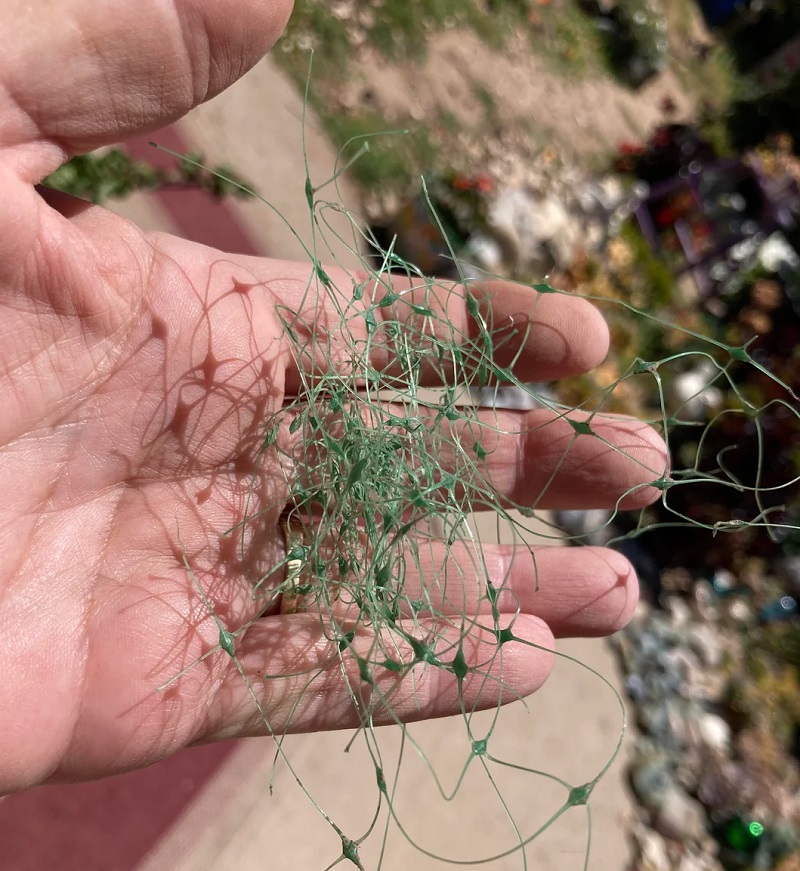Sometimes, even the most innocuous yards have something unsavory lurking beneath the surface. And for one homeowner, a nasty surprise came in the form of plastic netting.
They posted a photo of the offensive material on an anti-lawn subreddit, whose motto is "Monoculture lawns must come to an end and bring forward the biodiverse lawns era!"

The homeowner explained that the netting had been installed underneath sod many years prior. Now, although the grass is dead, the netting still stretches "from corner to corner."
"It makes me rage!" they vented. "I've been working on it for two years and still finding it!"
"What a nightmare," one person empathized.
Other commenters had encountered similar situations. "We had that in my yard as well," one person wrote. "I hate the stuff."
While the netting is designed to keep grass seeds in place to grow, it's seen as a poor method by most gardeners. Its brief period of usefulness is far outweighed by the fact that it takes years — or even decades — to break down. And once it does disintegrate, it merely breaks down into harmful microplastics, which end up trickling up the food chain and into the bloodstreams of humans and animals.
Yet despite the many compelling reasons to avoid putting toxic plastic netting directly into soil, many companies don't seem to want to change their ways.
🗣️ What's the hardest thing about taking care of your yard?
🔘 Mowing the lawn 🏡
🔘 Controlling weeds 🌿
🔘 Keeping pests at bay 🐿️
🔘 I don't have a yard 🤷
🗳️ Click your choice to see results and speak your mind
"Our house was built in 2016 and the whole property was sodded with sod that has that s***. They sell sod at the big box stores that have that s***. It's still widely used," one person said. "It was actually pretty difficult to find a place that didn't carry that type."
Fortunately, OP shared that after many dedicated years of slowly digging up and throwing out the netting piece by piece, they had gotten rid of most of it.
"With all the rain we had this year, the transformation has been incredible," they enthused. "Went from lifeless dirt with no life but potato bugs to soil teeming with worms and other critters. It feels good. Turned most of it to poppies."
For those patient enough to remove landscaping fabric or netting — or those lucky enough to have never had to fight it in the first place — opting to rewild the yard with native plants instead will keep it healthy, thriving, and free of any nasty surprises.
Join our free newsletter for easy tips to save more and waste less, and don't miss this cool list of easy ways to help yourself while helping the planet.









